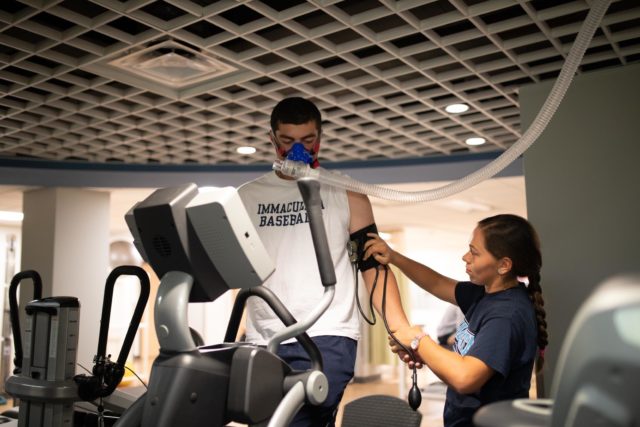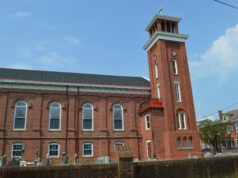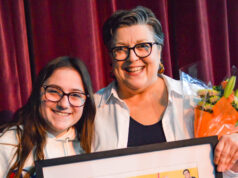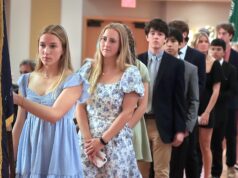
Age doesn’t matter when it comes to being healthy and agile. Younger people can face health challenges, older people can remain athletic into their golden years.
It can also be the opposite.
It doesn’t matter how old you are if you’re a person who needs help maintaining wellness.
Helping others remain fit is a heavy focus at many places of learning and draws students looking at different ways to be part of health care. More students are pursuing choices such as the exercise science program at Immaculata University in Chester County, Pa. It offers four different tracks so students can specialize based on desired career path. These tracks include: movement science, pre-occupational/pre-physical therapy, pre-physician assistant and sport management. Overall, exercise science majors study how the human body moves and the changes caused by physical activity. The goal of this major is to help students understand how to maintain or improve fitness.
Sara Desmond, a Saint Mark’s High School graduate and student at Immaculata, is enrolled in the school’s exercise science program. She knew from a young age she wanted to help people. Desmond says she always aspired to work in a health-care related profession, was interested in medicine and wanted to work in a job that allowed her to encounter people on a daily basis. With this ambition, she chose to pursue occupational therapy. She wants to help people be more independent.
Desmond began thinking about being an occupational therapist during her time at Saint Mark’s.
She credits the school’s volleyball coach and teacher, Stephanie Stracco, with helping develop her interest. Stracco was her human anatomy teacher at the high school and helped the class come alive when it came to learning. When Desmond was on the volleyball court, she said Stracco always demanded excellence. Conditioning was at the forefront.
“Ms. Stracco sparked an interest in learning about the movement and mechanics of human anatomy that led me to pursue a degree in exercise science,” Desmond said.
In senior year of high school, she says she was fortunate to have been a participant in the pilot program for normal nutrition course that was taught by the University of Delaware professors. This program allowed students to take college courses while in high school.
At Immaculata, Desmond is part of the Student Athletic Advisory Committee that helps promote a positive athletic image. She was also part of the Catholic Relief Service, which helps people in need, and coaches a U12 travel volleyball team.
When she graduates Immaculata, Desmond hopes to go on to graduate school for occupational therapy and pass the boards for her certification.
Desmond said hands-on activities are what gives students the best real-life learning experiences. The exercise science program at Immaculata has provided a variety of hands-on activities such as fitness assessment testing, blood pressures, balance testing and peak flow meters.
Barbara Gallagher, a program director of the exercise science program, said the school is opening a new Exercise Physiology lab in September which will provide more hands-on learning. She said as people become increasingly aware of the benefits of good health and fitness habits, the demand for trained practitioners in the field of exercise science will continue to expand.






